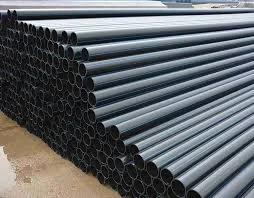Abe . 09, 2024 18:00 Back to list
Plastic Irrigation Pipe Connectors and Fittings for Efficient Water Management Solutions
Understanding Plastic Irrigation Pipe Fittings A Comprehensive Guide
Irrigation is a crucial component of modern agriculture, ensuring that crops receive the necessary water to sustain growth, particularly in areas where rainfall is insufficient. One of the trends in irrigation systems is the increasing use of plastic materials, particularly in the fittings that connect various components of the irrigation system. This article delves into the importance of plastic irrigation pipe fittings, their advantages, applications, and best practices.
What are Plastic Irrigation Pipe Fittings?
Plastic irrigation pipe fittings are components used to connect, direct, and control the flow of water within irrigation systems. These fittings can include elbows, tees, couplings, adapters, and valves, and are typically made from materials such as polyvinyl chloride (PVC), high-density polyethylene (HDPE), or polypropylene. Their versatility and durability make them an ideal choice for both residential and commercial irrigation systems.
Advantages of Plastic Pipe Fittings
1. Lightweight and Easy to Handle One of the most significant advantages of plastic fittings is their lightweight nature, making them easy to transport and install. This feature significantly reduces labor costs and time during the installation process.
2. Corrosion Resistance Unlike metal fittings, plastic fittings do not corrode. This property ensures that they last longer, especially in wet environments, minimizing the need for replacements.
3. Cost-Effective Plastic fittings are generally cheaper than their metal counterparts, making them a cost-effective option for many agricultural operations. The initial investment in plastic fittings can lead to savings in maintenance and replacement costs over time.
4. Versatile Use Plastic pipe fittings can be utilized in various irrigation systems, including drip irrigation, sprinkler systems, and surface irrigation. Their adaptability allows farmers to customize their irrigation setup according to their specific needs.
5. Smooth Interior Surface The smooth interior of plastic fittings prevents the buildup of minerals and sediments that can clog the system. This characteristic helps maintain optimal water flow and reduces the frequency of cleaning and maintenance.
6. Temperature Resistance Many plastic fittings are designed to withstand a range of temperatures, making them suitable for varied climates. They can handle both cold water and hot water applications, ensuring reliability in different conditions.
Applications of Plastic Irrigation Pipe Fittings
plastic irrigation pipe fittings

Plastic irrigation pipe fittings are used in various agricultural scenarios, including
- Drip Irrigation Systems For efficient water delivery directly to plant roots, minimizing waste and maximizing the use of water resources. - Sprinkler Systems Plastic fittings connect various components of sprinkler systems, ensuring an even distribution of water over large areas. - Surface Irrigation Used in gravity-fed irrigation systems, plastic fittings direct water flow across fields, optimizing water usage.
Installation and Maintenance Best Practices
For optimal performance and longevity of plastic irrigation fittings, it is essential to follow proper installation and maintenance practices
1. Correct Sizing Ensure that the fittings match the size of the pipes being used. Incorrect sizing can lead to leaks and inefficient water distribution.
2. Proper Joining Techniques When connecting fittings to pipes, utilize the appropriate methods such as solvent welding for PVC or heat fusion for HDPE to ensure a tight seal.
3. Regular Inspections Periodically check fittings for signs of wear or damage, such as cracks or leaks. Early detection can prevent larger issues and costly repairs.
4. Protect from UV Exposure Some plastic materials can degrade when exposed to direct sunlight for extended periods. Using covers or painting fittings can help mitigate this effect.
5. Winterization In colder climates, it is important to drain and properly store irrigation systems to prevent freezing and damage to fittings.
Conclusion
Plastic irrigation pipe fittings are a vital component of efficient irrigation systems, providing farmers and agricultural workers with reliable, cost-effective, and durable solutions to manage water resources. Understanding their advantages, applications, and best practices for installation and maintenance can greatly enhance the overall effectiveness of an irrigation system. As agriculture continues to evolve with advancements in technology and sustainability, plastic fittings will likely play an increasingly pivotal role in ensuring water is used wisely and efficiently.
-
High-Quality PPR Pipes and Fittings Durable ERA PPR & PVC PPR Solutions
NewsJul.08,2025
-
Black HDPE Cutting Board - Durable, Non-Porous & Food Safe HDPE Plastic Cutting Board
NewsJul.08,2025
-
High-Quality CPVC Panel Durable HDPE & PVC Panels Supplier
NewsJul.08,2025
-
Double PE Welding Rod Supplier - High Strength, Durable & Versatile Welding Solutions
NewsJul.07,2025
-
High-Quality PVC-O Pipe Supplier Durable 75mm PVC Pipe & Connections Leading PVC Pipe Company
NewsJul.07,2025
-
HDPE Drainage Pipe Supplier – Durable & Corrosion-Resistant Solutions
NewsJul.06,2025

